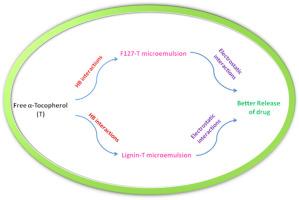Interactions of α-Tocopherol in F127/lignin microemulsions: A DFT and semi-empirical study
Abstract
Tocopherols are fat soluble substances with antioxidant properties. The α-Tocopherol (T) is the major form of Tocopherols and can decrease the risk of cancer. F127-based and Lignin-based oil-in-water microemulsions seem to increase the bioavailability of T and cause better release of this therapeutic agent. Thus, T-loaded microemulsions were designed by means of density functional theory (DFT) and semi-empirical methods. Atoms in molecules (AIM), natural bond orbital (NBO) analyses, localized molecular orbital energy decomposition analysis (LMO-EDA), and density of states plots were employed to explore the effective factors on the strength of the interactions between surfactants and T. Results indicate that F127-T complexes are more stable than Lignin-T ones. Furthermore, the stable release of T in microemulsions is due to the electrostatic interactions between surfactants and T. Formation of hydrogen bond (HB) interactions between surfactants and T stabilizes the microemulsion system. These interplays are suggested to take part in the better function of T in microemulsions compared to free T. The semi-empirical study reveals that the heats of formation (ΔHf values) of the F127-T complexes are less negative than those for the Lignin-T ones.


 求助内容:
求助内容: 应助结果提醒方式:
应助结果提醒方式:


